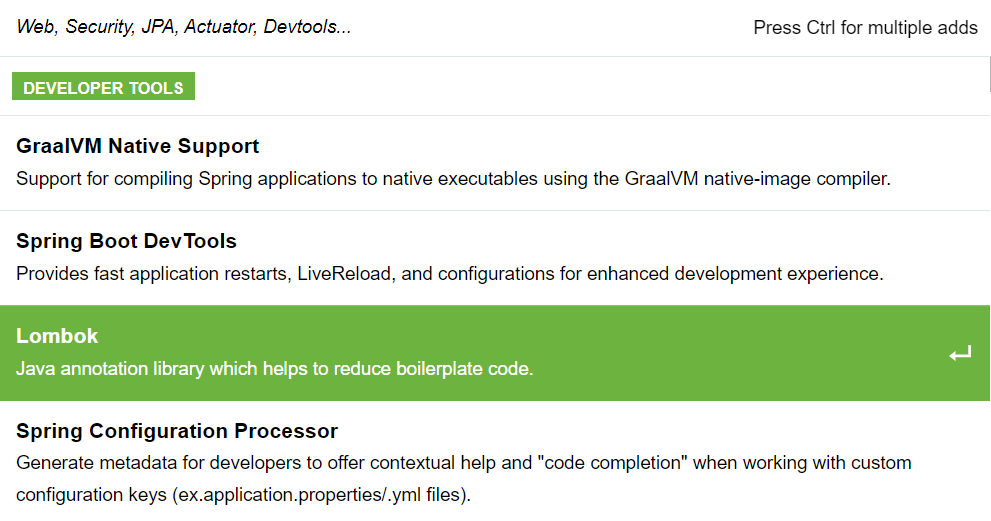In this article, I will be guiding you step by step in creating a test automation framework using Playwright, Spring boot, Java, Cucumber and Junit5. Additionally, I will explain about Aspect Oriented Programming (AOP) for cross-cutting features (like logging) and using Lombok annotations for simplification and enhancing readability of the code.
What do you need before starting?
I always recommend to use latest tech to explore full potentials of various software's. Its absolutely fine if someone disagrees with this approach 😃
- A 64 bit system with at least 4GB RAM (8 GB preferred).
- MacOS - Monterey or Windows 10 and above
- Java 11 or above installed
- IntelliJ Community edition (latest version preferred) installed
- Docker Desktop installed
- Cucumber-java
- Cucumber-spring
- Cucumber-junit-platform-engine
- Playwright
- junit-platform-suite
- Commons-lang3
- aspectjweaver
import io.cucumber.spring.CucumberContextConfiguration;
import org.springframework.test.context.ContextConfiguration;
@CucumberContextConfiguration
@ContextConfiguration(classes={TestConfig.class})
public class CucumberContextConfig {
}
@Configuration
@EnableAspectJAutoProxy
@ComponentScan("springboot.playwright.cucumber")
public class TestConfig {
}
import com.microsoft.playwright.*;
import java.util.Objects;
import java.nio.file.Path;
import java.nio.file.Paths;
import java.time.LocalDateTime;
import java.time.format.DateTimeFormatter;
import java.util.Optional;
@SuppressWarnings({"unused","cast"})
public class PlaywrightBrowserSupplier implements PlaywrightBrowser {
Playwright playwright = Playwright.create();
Browser browser;
BrowserContext browserContext;
Page page;
//This boolean value is used for introducing Playwright tracing
Boolean isTracingSet=false;
public PlaywrightBrowserSupplier(String BrowserType, Optional<Boolean> tracingOption){
setPlaywrightBrowser(BrowserType);
//This method checks the optional tracingOption value and accordingly turns on
// Playwright browser tracing
setTracing(tracingOption.orElse(false));
}
/** This method will initialize the PlaywrightBrowser bean (Facade design pattern)
* with appropriate browser type
* Author: Susnigdha Chatterjee
*/
@Override
public void setPlaywrightBrowser(String browserType)
{
switch(browserType.toLowerCase()) {
case "chrome":
//Below line will launch chrome browser in non-headless mode
//browser = playwright.chromium().launch(new BrowserType.LaunchOptions()
// .setHeadless(false));
//If you wish to execute the code in Headless mode then please un comment
// below line*/
browser = playwright.chromium().launch();
break;
case "firefox":
browser = playwright.firefox().launch();
break;
}
setPlaywrightBrowserContext();
setPlaywrightPage();
}
@Override
public Browser getPlaywrightBrowser() {
return browser;
}
@Override
public void setPlaywrightBrowserContext() {
browserContext=getPlaywrightBrowser()
.newContext();
}
@Override
public BrowserContext getPlaywrightBrowserContext() {
return browserContext;}
@Override
public void setPlaywrightPage(){
page=getPlaywrightBrowserContext().waitForPage(()->getPlaywrightBrowserContext()
.newPage());
}
/**This method will help to retrieve the Playwright page from the PlaywrightBrowser bean
*/
@Override
public Page getPlaywrightPage(){
return page;
}
@Override
public void close() {
page.close();
browserContext.close();
playwright.close();
}
/**
* This method will be called from Hooks class, from cucumber After hook
* @author Susnigdha Chatterjee
* @return byte array which holds the screenshot
*/
@Override
public byte[] captureScreenshot(){
Path objPath = Paths.get("target/screenshots/Screenshot_"+ LocalDateTime.now()
.format(DateTimeFormatter.ofPattern("ddMMyy_hhmmss"))+".png");
return page.screenshot(new Page.ScreenshotOptions().setPath(objPath)
.setFullPage(true));
}
/**
* This method will be called from Constructor to set the Playwright browser tracing on
* @author Susnigdha Chatterjee
* @return byte array which holds the screenshot
*/
@Override
public void setTracing(Boolean option){
if(option && !Objects.isNull(browserContext)){
browserContext.tracing().start(new Tracing.StartOptions()
.setSnapshots(true));
isTracingSet = true;
}
}
/**
* This method will be called from Hooks class's After annotation to decide if
* Playwright browser tracing needs to be turned off
* @author Susnigdha Chatterjee
* @return byte array which holds the screenshot
*/
@Override
public boolean isTracingOptionSet(){
return isTracingSet;
}
}
import io.cucumber.spring.ScenarioScope;
import lombok.extern.slf4j.Slf4j;
import org.springframework.context.annotation.Bean;
import org.springframework.context.annotation.Configuration;
import java.util.Optional;
/**
* Using factory design pattern. The PlaywrightBrowser interface serves as the factory.
* PlaywrightBrowserSupplier implements the PlaywrightBrowser interface based on
* the browser type supplied using the browserType parameter of
* testconfigurations.properties file
*/
@Configuration
@Slf4j
@SuppressWarnings({"unused","cast"})
public class PlaywrightInitializer {
/** Using Facade design pattern to initialize Playwright page using
* custom built PlaywrightBrowser interface
* @author Susnigdha Chatterjee
*/
@Bean(name="PlaywrightBrowser", destroyMethod = "close")
@ScenarioScope
public PlaywrightBrowser init() {
//Creating the bean of type PlaywrightBrowser using its implementing
// class PlaywrightBrowserPage
log.info("Creating PlaywrightBrowser bean");
//Added new Optional parameter to the constructor method
return new PlaywrightBrowserSupplier(System.getProperty("browser"),
Optional.of(Boolean.valueOf(System.getProperty("tracing"))));
}
}
import com.microsoft.playwright.Tracing;
import io.cucumber.java.Scenario;
import lombok.extern.slf4j.Slf4j;
import springboot.playwright.cucumber.playwright.PlaywrightBrowser;
import io.cucumber.java.After;
import java.nio.file.Paths;
@Slf4j
public class hooks {
PlaywrightBrowser playwrightBrowser;
hooks(PlaywrightBrowser browser) {
this.playwrightBrowser=browser;
}
@After
public void afterScenario(Scenario scenario)
{
//Capturing screenshot irrespective of whether the test pass or fail
//This approach will ensure there is always evidences for the tests outcome
scenario.attach(playwrightBrowser.captureScreenshot(),
"image/png","screenshot");
log.debug("Attaching full page screenshot, after the scenario");
if(playwrightBrowser.isTracingOptionSet()) {
playwrightBrowser.getPlaywrightBrowserContext().tracing()
.stop(new Tracing.StopOptions()
.setPath(Paths.get("target/traces.zip")));
}
}
}
import io.cucumber.java.Before;
import lombok.extern.slf4j.Slf4j;
import org.junit.platform.suite.api.ConfigurationParameter;
import org.junit.platform.suite.api.IncludeEngines;
import org.junit.platform.suite.api.SelectClasspathResource;
import org.junit.platform.suite.api.Suite;
@Suite
@IncludeEngines("cucumber")
@SelectClasspathResource("/features")
@ConfigurationParameter(key="cucumber.plugin",
value = "html:target/CucumberTestExecutionReport_Chrome.html")
@Slf4j
public class runnerChrome {
@Before
public void setUp() {
//You could pass these property values using application.properties file also.
//I am writing it in this way to make it easy to understand for those who have
// less technical knowledge
//and willing to learn and experiment more
System.setProperty("browser","chrome");
System.setProperty("tracing", String.valueOf(true));
log.info("Passing browser property to PlaywrightBrowser bean");
}
}
import io.cucumber.spring.ScenarioScope;
import lombok.extern.slf4j.Slf4j;
import org.aspectj.lang.JoinPoint;
import org.aspectj.lang.ProceedingJoinPoint;
import org.aspectj.lang.annotation.Around;
import org.aspectj.lang.annotation.Aspect;
import org.aspectj.lang.annotation.Before;
import org.springframework.stereotype.Component;
@Aspect
@Slf4j
@Component
@ScenarioScope
public class CommonLogger {
@Before("execution(* springboot.playwright.cucumber." +
"pageObjects.PageObject.*(..))")
public void putCommonLog(JoinPoint joinPoint) {
log.debug("Invoking this method from PageObject class instance: "
+ joinPoint.getSignature().getName());
}
@Around("execution(* com.microsoft.playwright.*.*(..))")
public Object exceptionHandlerWithReturnType(ProceedingJoinPoint joinPoint)
throws Throwable{
Object obj;
obj = joinPoint.proceed();
return obj;
}
}
If you have followed the contents so far and also checked out the associate GitHub repository, then I am sure you have learned step by step how to design a test automation framework, using Playwright, Spring boot, Java, Cucumber and Junit5.










